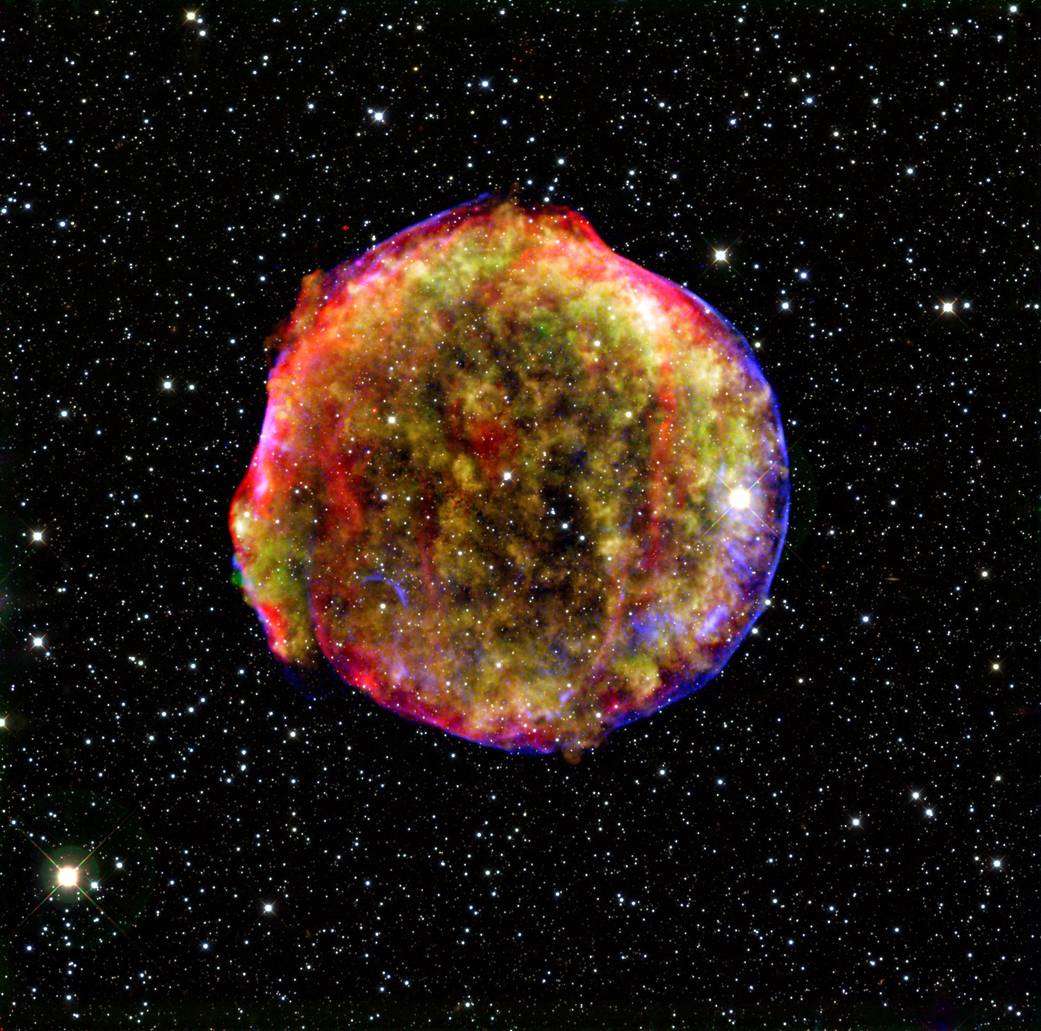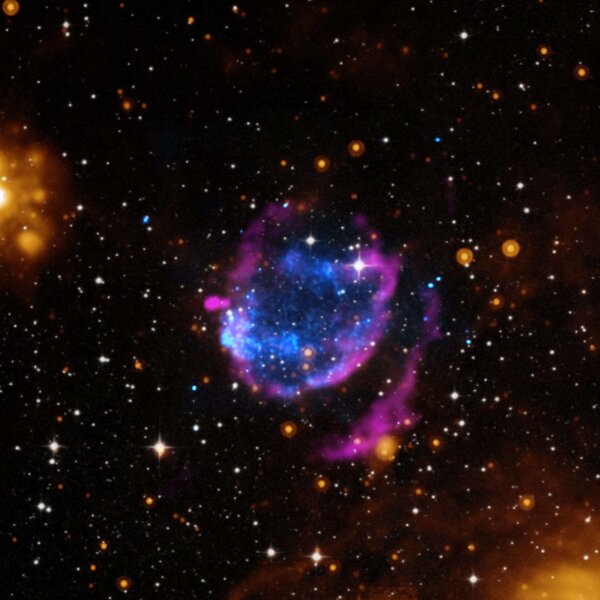Create a free profile to get unlimited access to exclusive videos, sweepstakes, and more!
Totally metal star that survived a surpernova is living fast because it already died once

Living fast can be fatal, but one star doesn’t have to worry about that because it’s already on its second life. Star LP 40-365 is hurtling through space at speeds of about 2,000 miles per hour.
This strange, highly metallic stellar cannonball is part of the corpse of a white dwarf star that was destroyed in a type IA supernova, in which two stars (at least one has to be a white dwarf) orbit each other in a death spiral until they finally collide. The power of such an explosion gave the star enough energy to rocket through the Milky Way.
Not too long ago, scientists didn’t even think a star like this could exist. Astronomer J.J. Hermes of Boston University, who led a study recently published in The Astrophysical Journal Letters, was also wowed by something this huge that escaped a supernova alive—or a least undead.
“The explosions in some supernovae are probably not strong enough to completely disrupt the whole white dwarf, though the details are still very uncertain because simulating these extreme conditions remains a tricky business,” Hermes told SYFY WIRE.
Not only is this star a literal shooting star, but it is also rotating on its trajectory, wherever that may lead. Hermes thinks it is moving fast enough to be ejected from the galaxy. The supernova that set it off involved a white dwarf and another star orbiting each other extremely fast, possibly every hour, and getting dangerously closer and closer every time until the final crash. Even in pieces, a binary system needs gravity to stay together. Lack of gravity allowed chunks of both stars to fly in opposite directions at the breakneck speed at which they had been orbiting.
This piece of cosmic shrapnel is also highly metallic. Because of what they have been through, supernova survivors like it have some of the highest levels of metal ever found in stars. Stars that explode experience intense nuclear reactions. When a star is still alive, it burns hydrogen which it converts into helium through the process of nuclear fusion. Nuclear fusion can create one element out of another by smashing together atomic nuclei. Different nuclei and subatomic particles, along with immense amounts of energy, are released.
“As stars evolve, some can eventually reach a condition where carbon atoms start to fuse in a runaway reaction that triggers the massive supernova explosion, said Hermes. “The temperatures reached in these explosions cause all kinds of reactions; some create heavy metals.”
Whatever gave birth to LP 40-365 also unleashed enough energy and heat to create vast amounts of metals like nickel and iron. Another peculiar thing about the hardcore metal star is its slow rotation rate. There is always one star that ends up vomiting material on the other one, which ends up being blown apart after it accumulates too much star stuff. Supernovas are usually difficult to observe, which often makes figuring out which star was the donor and which was the receiver, but the slow rotation rate of LP 40-365 is likely giving away something.
LP 40-365 must have been on the receiving end. Both stars in a binary supernova will puff up from all the inflammatory processes going on, but the donor it would still expand less and rotate faster. This is because of conservation of angular momentum, meaning an object will spin at the same rate so long as no more twisting force, or torque, is added. Speed of spin depends on radius. Angular momentum works the same way as linear momentum in an object traveling in a straight line. The cannonball that Hermes and his team observed has both.
“We would expect a donor remnant star to be rotating much more rapidly than LP 40-365 because of how much the conservation of angular momentum depends on the radius of the initial star,” he said. “The explosion would slow the rotation rate some, the donor would still rotate much more rapidly.”
As it continues burning through the sky, LP 40-365 might have more to reveal to us about the rare type of star it is.



























